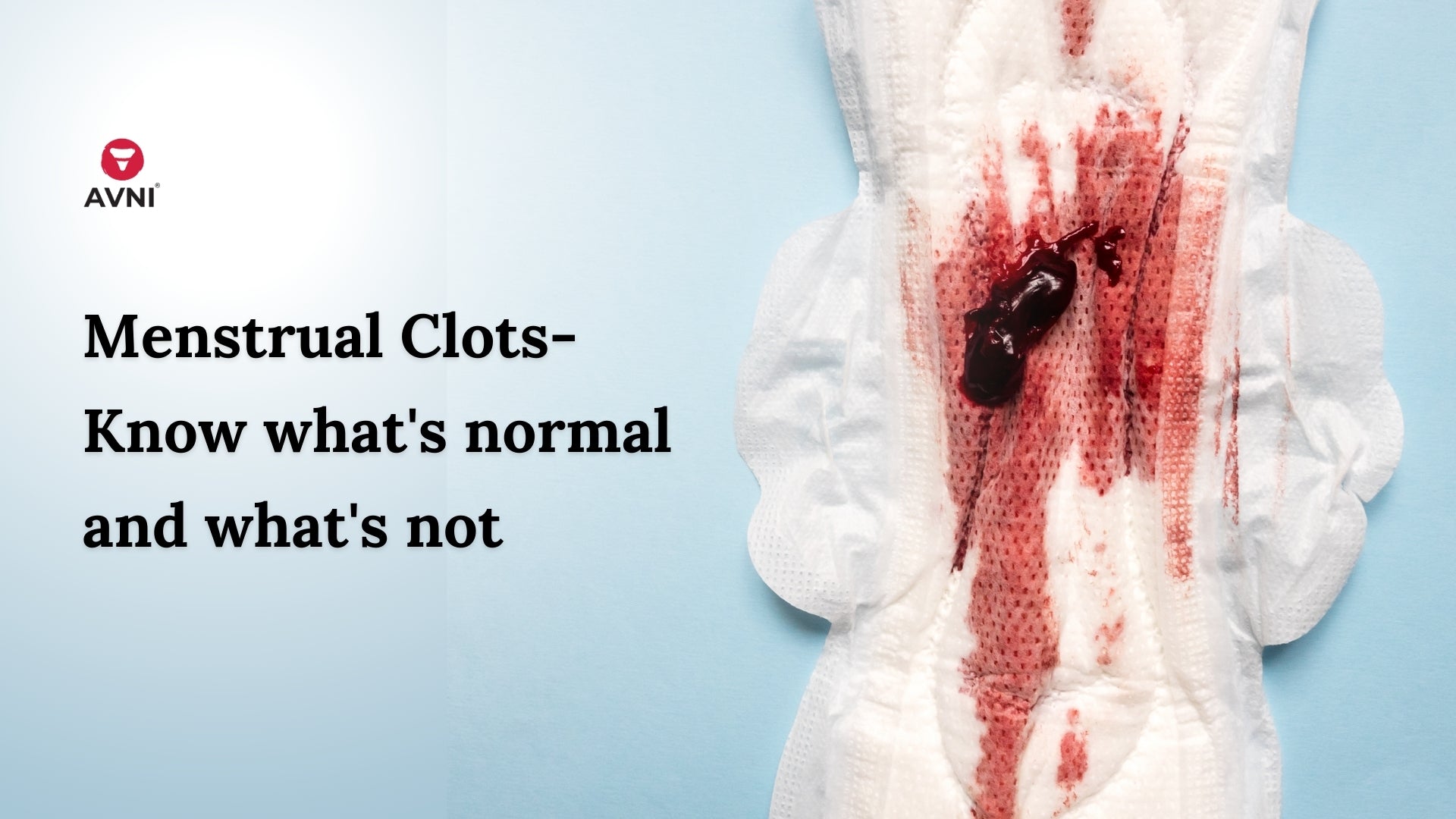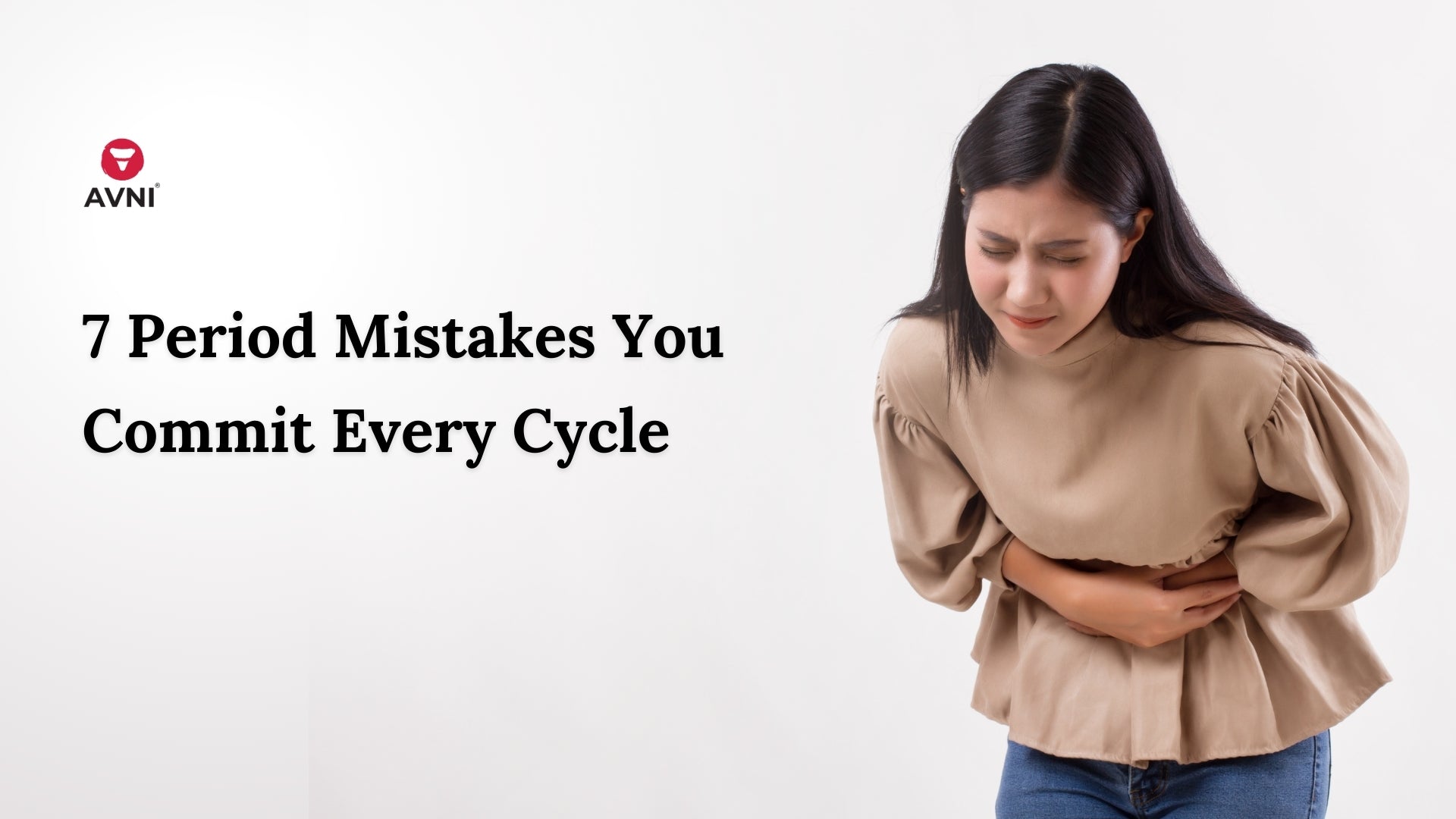
Menstrual Clots- Know what's normal and what's not
Have you ever noticed blood clots during your period? And are you wondering if the blood clots you are observing lately on your pads or tampons are normal or not? This blog is dedicated to all the women who have been observing some form of menstrual clots in their period flow and are worried about them.
Let us learn what is normal and what is not regarding the menstrual clots.
It further tells you about the different types of menstrual clots and what you should do if you observe them.
Short answer: You must talk to your healthcare provider if you have period blood clots that are larger than 1 inch (2.5 cm) in length. Basically the size of a pea.
What forms a period clot?
A menstruating person bleeds approximately 2-3 tablespoons (35-45 ml) of blood. The blood includes the shredded uterine lining — cells similar to skin cells, blood vessels, and glands.
Only heavy bleeding can cause menstrual blood clots because it takes a longer time for the blood to discharge itself. Period blood clots can appear like chunks or clumps of blood with a jelly-like consistency. They could also vary in size and number.
What does a Normal period blood clot feel like?
Do you recall the brown scabs that would form on your knees when you injured them as a child? That was actually a blood clot! Clotting is a natural process in the human body to prevent excess blood loss.
Similarly, your body prevents too much menstrual blood loss by forming blood clots. The coagulation process uses plasma (the liquid part of the blood) and platelets (tiny blood cells) that bind together to form clots.
Menstruation begins when hormones trigger the shedding of the uterine lining, also known as the endometrium. Menstrual blood is a mixture of uterine lining and tissues of blood vessels. Sometimes these cells expel as clumps. Thus, small menstrual blood clots less than a quarter (size of a pea) are entirely normal.
The colour of period blood clots can differ. Your period's first few days can be characterized by dark red or blackish clots. You may also experience bright red blood clots at the beginning or end of your period. It indicates that the blood is flowing quickly and has not had a chance to clot completely.
Heavy periods are often associated with larger blood clots because the uterus retains more blood. The cervix dilates in order to pass large blood clots causing intense pain. This phenomenon partly explains why you're more likely to have cramps with heavy menstrual flow.
Related: Best sanitary pads for heavy period flow
What does an Abnormal period blood clot feels like?
Menorrhagia is a condition marked by heavy menstrual bleeding that lasts more than seven days. It is a sign of abnormal blood clots. If you are changing your pad or tampon every two hours or passing blood clots that are the size of a quarter or larger, your flow is considered heavy.
You may be experiencing abnormally large clots because of various conditions depending on your age and medical history.
Some of the most common conditions are mentioned below:
- Cesarean scar: Abnormal bleeding following a C-section could be a reason.
- Hormonal imbalance: Polycystic ovary syndrome (PCOS), menopause, perimenopause, and hypothyroidism, can lead to irregular shedding of the uterine lining causing heavy bleeding and possible clotting.
- Uterine fibroids: Fibroids are noncancerous growths in the uterus and can cause heavy bleeding.
- Endometriosis: A condition where tissue that looks like the lining of the uterus grows outside of it and attaches to other organs like ovaries and fallopian tubes.
- Adenomyosis: It is a condition in which the uterus often becomes enlarged due to the growth of tissue from the uterine lining into the uterine walls.
- Miscarriage: Pregnancy loss can happen before you even know you're pregnant. Heavy bleeding with blood clots is a common symptom in such a condition.
- Ectopic pregnancy: A critical condition in which the unborn child has implanted itself outside of the uterus.
- Cancer in the cervix or uterus: Possibly causing blood clots but much less likely.
Abnormal-period-blood-clot

Anemia
Periods with heavy bleeding are more likely to cause iron deficiency — anemia.
Red blood cells are less plentiful in the body when anemia occurs. Having low iron levels can result in this as the body relies on iron to make healthy blood cells.
There are several other symptoms associated with iron deficiency, including:
- Weakness
- general fatigue
- shortness of breath
Related: Is your period and mental health interlinked?
When to See a Healthcare Provider
It is crucial to seek medical care if you experience any of the subsequent symptoms:
- Blood clots in large quantities
- Bleeding continues even after seven days
- Exorbitant abdominal pain with vomiting or nausea
- Blood clots are more significant than a quarter (size of a lemon)
- Menstrual bleeding that is heavy enough to require altering of tampons or pads every couple of hours
Questions you may expect from the HealthCare Professional
When you see a healthcare provider about period blood clots — they will ask you some questions to help guide their next steps in evaluating your condition.
- How big are the clots?
- Have you ever been pregnant?
- What medications are you taking?
- How heavy is your menstrual flow?
- How many days does your period last?
- Have you ever undergone pelvic surgery?
- Do you use contraceptives? If so, what kind?
- Have you experienced changes in your menstrual flow over time?
Your healthcare professional might perform a pelvic exam if the clots seem abnormal or there is no apparent cause. The doctor may also order some tests to determine what might be causing your blood clots — such as blood tests, ultrasound, or hysteroscopy.
Medication
Medications designed to stabilize hormone levels and reduce heavy bleeding may be prescribed by your doctor.
The doctor may suggest that you use or change a birth control method. A progestin-containing intrauterine device (IUD) and some birth control pills may reduce blood flow.
If you experience symptoms, such as cramping, pain, or discomfort —your doctor may prescribe nonsteroidal anti-inflammatory drugs (NSAIDs). NSAIDs may also reduce excessive bleeding.
Blood clotting medication may be an alternative for those who do not wish to use hormone treatments. The most appropriate course of action is to consult a doctor.
Bottom Line
Is it normal to observe period blood clots? It is normal and acceptable if these are small clots of maybe a size of a pea or a ground nut. But you should consult a doctor if the blood clot you observe is larger than it and like the size of a lemon. The doctor will prescribe you an ultrasound scanning test to look into the condition of your uterus and determine the underlying reason for the excessive menstrual bleeding.



Leave a comment
This site is protected by hCaptcha and the hCaptcha Privacy Policy and Terms of Service apply.